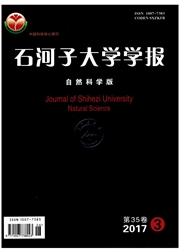

 中文摘要:
中文摘要:
硅是一种具有应用前景的负极材料。为了解决在电化学循环过程中由于硅电极体积变化较大、导电性比较差而造成负极材料比容量迅速衰减及其循环性能不稳定的问题,本研究利用溶胶-凝胶法,经过镁热反应制得具有三明治结构的负极材料石墨烯-硅-石墨烯;通过实验研究发现负极材料G-Si-1:1具有较好的电化学性能,在电流密度为0.1 A/g时首次放电比容量为1150 m A·h·g~(-1),循环100周时放电比容量为534.2 m A·h·g~(-1)。负极材料石墨烯纳米片负载硅纳米颗粒的合成路线较为简单,并且具有较高的放电比容量和较好的循环性能,在未来具有较好的应用前景。
 英文摘要:
英文摘要:
Silicon is a promising anode material with the theoretical special capacity of 4200 m A·h·g~(-1), which is 10 times of the special capacity of graphene anode materials. However, due to the large change in the volume of the silicon electrode and the relatively poor conductivity during the electrochemical cycle, the rapid decay of the specific capacity and the instability of the cycle performance are caused. In order to solve the above problem,the structure of graphene-silica-graphene sandwich was prepared by sol-gel method and through magnesium heat reaction in this paper. The specific discharge capacity of the negative electrode G-Si-1:1 is 1150 m A·h·g~(-1) at 0.1 A g~(-1) and 534.2 m A·h·g~(-1) at 100 cycles. The synthesis route of anode material sandwish structure graphene-loaded silion nanoparticles is relatively simple. In addition,the electrode material has excellent discharge capacity and good cycling performance and has a good prospect in the future.
 同期刊论文项目
同期刊论文项目
 同项目期刊论文
同项目期刊论文
 期刊信息
期刊信息
